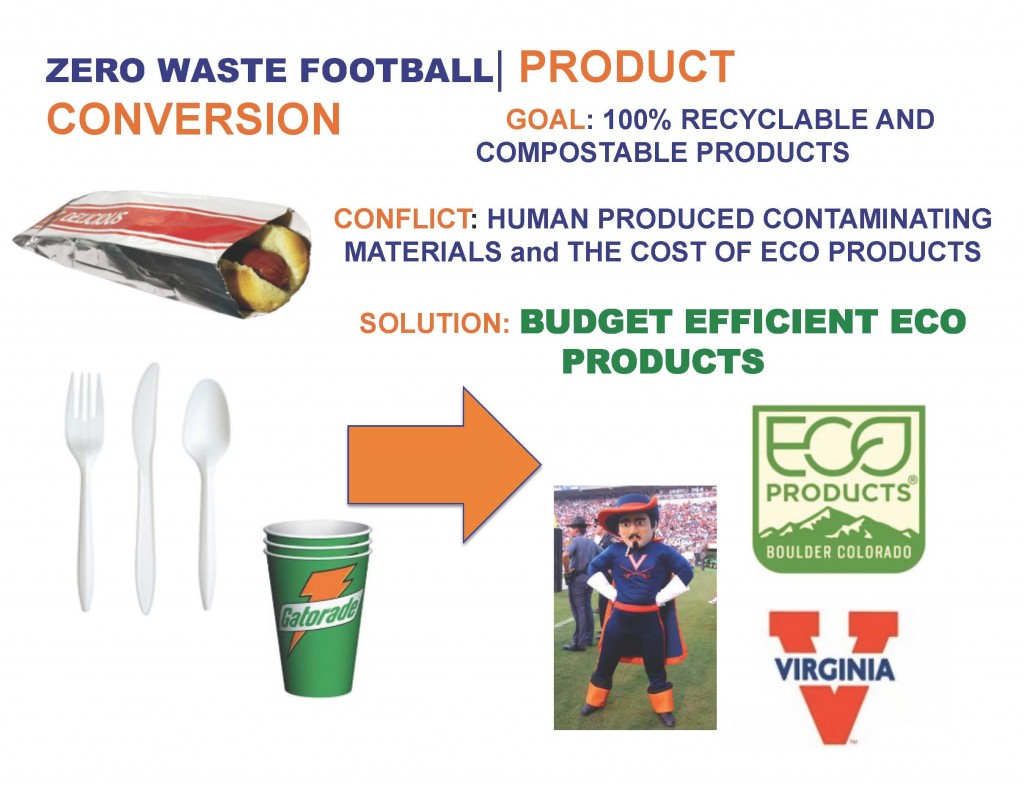Zero Waste Football: Product Conversion
ProductConversion (click PDF)
Fall 2011
Team members: Ariana Moledina, Cara Linnenkohl, Megan Watson
Our objective as the Product Conversion faction of the Zero-Waste initiative is to find sustainable alternatives for the products currently used for concession sales at Scott Stadium.
The first step we took to achieve this goal was evaluating previous efforts within the UVA community towards sustainability. This included work already completed by Matt Boegner and Ashley Badesch on the Zero Waste Initiative at Scott Stadium. We also researched universities and institutions that were successful in their own zero-waste endeavors. We then contacted community partners and collaborators including Kendall Singleton, Jess Wegner, and Rodney Griffin to further this research and determine ways to continue forward.
Over the course of the semester we proceeded to research alternative products and analyzed their feasibility at Scott Stadium based on cost, performance, and environmental impact. We then compiled all alternative solutions and performed a preliminary analysis based on these three factors to determine the most practical alternative products. Using this information we then completed a cost analysis comparing current products with alternative solutions. We expected alternatives to be more expensive overall; however, many of the alternative products are actually less expensive than the ones currently being used.
In conclusion, our research proves that the conversion of many of these products is not only more sustainable but also more cost efficient.

